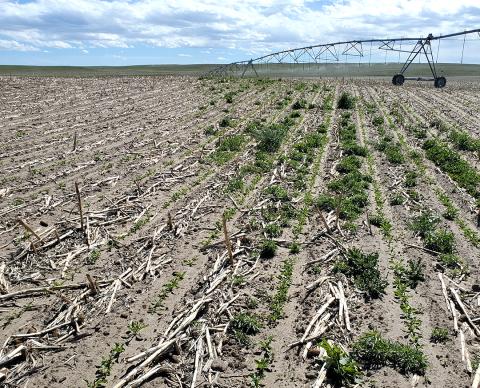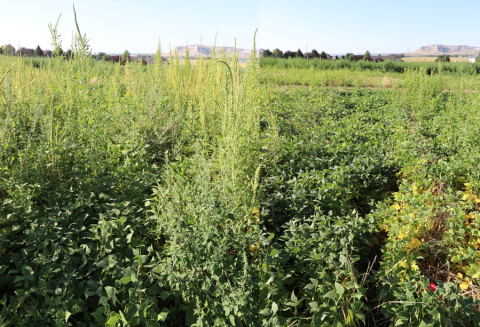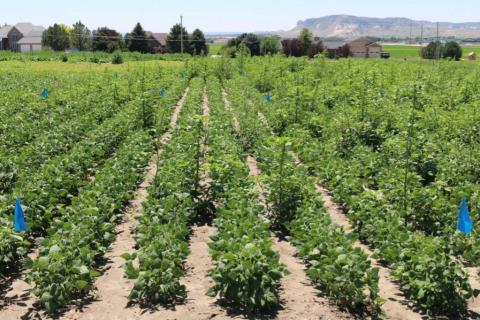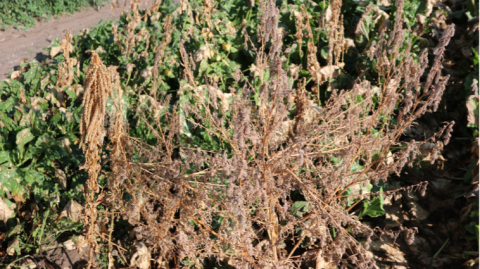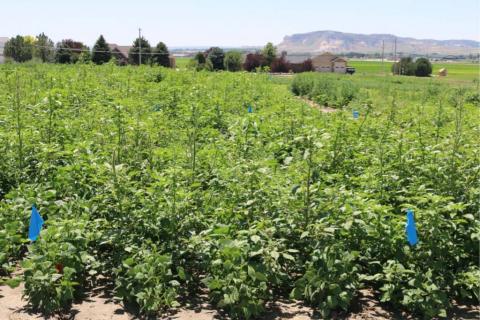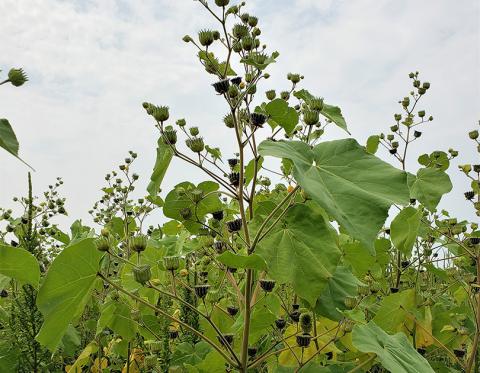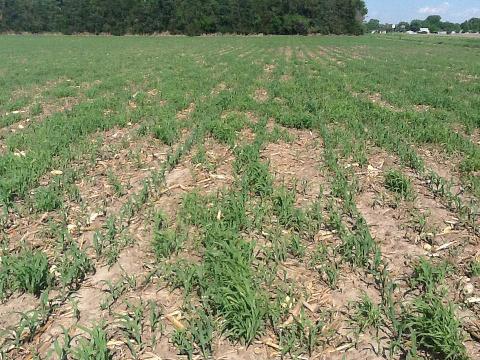Nebraska Extension Partnership Leads to Breakthrough Herbicide for Palmer Amaranth in Sugarbeets
September 26, 2024
Nebraska and Colorado-based sugarbeet growers are reporting promising results after using the newly-approved herbicide Goltrix this year.
Can Cover Crops Help with Weed Control?
March 20, 2024
UNL's Weed Science Program is investigating the benefits of using winter and spring seeded cover crops to control weeds in dry beans.
PREEC Battles Growing Palmer Amaranth Problem
April 26, 2023
Panhandle researchers are conducting 16 field trials this year to test six new herbicides and various management strategies to help producers control surging Palmer amaranth populations in sugarbeets and dry beans.
Wiping Paraquat as a Rescue or Salvage Treatment in Sugarbeet
November 9, 2022
To manage glyphosate-resistant Palmer in low-growing crops like sugarbeet, wipers filled with paraquat can be adapted by using the right speed, wiper height and wiper saturation.
Impact and Seed Production of Palmer Amaranth in Dry Beans
January 4, 2022
Results of a 2020-21 study investigating the impact of uncontrolled Palmer amaranth in dry beans. Using pinto beans, researchers were able to pinpoint yield loss and potential seed production of Palmer amaranth.
Control of Velvetleaf with Post-emergence Herbicides in Popcorn
August 12, 2021
Results of a study evaluating the efficacy and crop safety of labeled post-emergence herbicides to control velvetleaf, a major agricultural weed in Nebraska that reduces yields in popcorn if not controlled.
Control of Roundup/Liberty Resistant Corn Volunteers in Enlist Corn
August 5, 2021
Results of a study evaluating Assure II for Roundup/Liberty-resistant corn volunteer control in Enlist corn and correct timing of application for use in corn-on-corn production systems.
Controlling Summer Annual Grasses in Forages
April 8, 2021
Control of summer annual grasses in pasture or hay fields can be difficult, but with the right planning, it shouldn’t be impossible.


